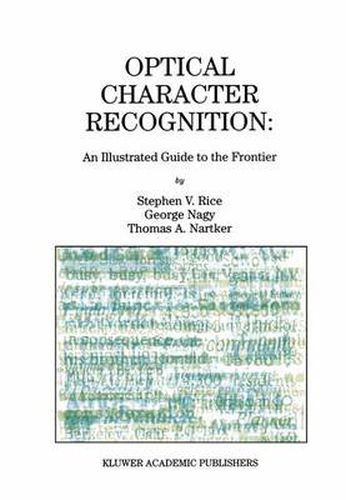Readings Newsletter
Become a Readings Member to make your shopping experience even easier.
Sign in or sign up for free!
You’re not far away from qualifying for FREE standard shipping within Australia
You’ve qualified for FREE standard shipping within Australia
The cart is loading…






This title is printed to order. This book may have been self-published. If so, we cannot guarantee the quality of the content. In the main most books will have gone through the editing process however some may not. We therefore suggest that you be aware of this before ordering this book. If in doubt check either the author or publisher’s details as we are unable to accept any returns unless they are faulty. Please contact us if you have any questions.
Optical character recognition (OCR) is the most prominent and successful example of pattern recognition to date. There are thousands of research papers and dozens of OCR products. This book offers a perspective on the performance of OCR systems in the late 1990s by illustrating and explaining actual OCR errors. The pictures and analysis provide insight into the strengths and weaknesses of OCR systems, and a road map to future progress. The text should pique the interest of users and developers of OCR products and desktop scanners, as well as teachers and students of pattern recognition, artificial intelligence, and information retrieval. The first chapter compares the character recognition abilities of humans and computers. The next four chapters present 280 illustrated examples of recognition errors, in a taxonomy consisting of imaging defects, similar symbols, punctuation, and typography. These examples were drawn from large-scale tests conducted by the authors. The final chapter discusses possible approaches for improving the accuracy of today’s systems, and is followed by an annotated bibliography. It is suitable as a secondary text for a graduate level course on pattern recognition, artificial intelligence, and information retrieval, and as a reference for researchers and practitioners in industry.
$9.00 standard shipping within Australia
FREE standard shipping within Australia for orders over $100.00
Express & International shipping calculated at checkout
This title is printed to order. This book may have been self-published. If so, we cannot guarantee the quality of the content. In the main most books will have gone through the editing process however some may not. We therefore suggest that you be aware of this before ordering this book. If in doubt check either the author or publisher’s details as we are unable to accept any returns unless they are faulty. Please contact us if you have any questions.
Optical character recognition (OCR) is the most prominent and successful example of pattern recognition to date. There are thousands of research papers and dozens of OCR products. This book offers a perspective on the performance of OCR systems in the late 1990s by illustrating and explaining actual OCR errors. The pictures and analysis provide insight into the strengths and weaknesses of OCR systems, and a road map to future progress. The text should pique the interest of users and developers of OCR products and desktop scanners, as well as teachers and students of pattern recognition, artificial intelligence, and information retrieval. The first chapter compares the character recognition abilities of humans and computers. The next four chapters present 280 illustrated examples of recognition errors, in a taxonomy consisting of imaging defects, similar symbols, punctuation, and typography. These examples were drawn from large-scale tests conducted by the authors. The final chapter discusses possible approaches for improving the accuracy of today’s systems, and is followed by an annotated bibliography. It is suitable as a secondary text for a graduate level course on pattern recognition, artificial intelligence, and information retrieval, and as a reference for researchers and practitioners in industry.